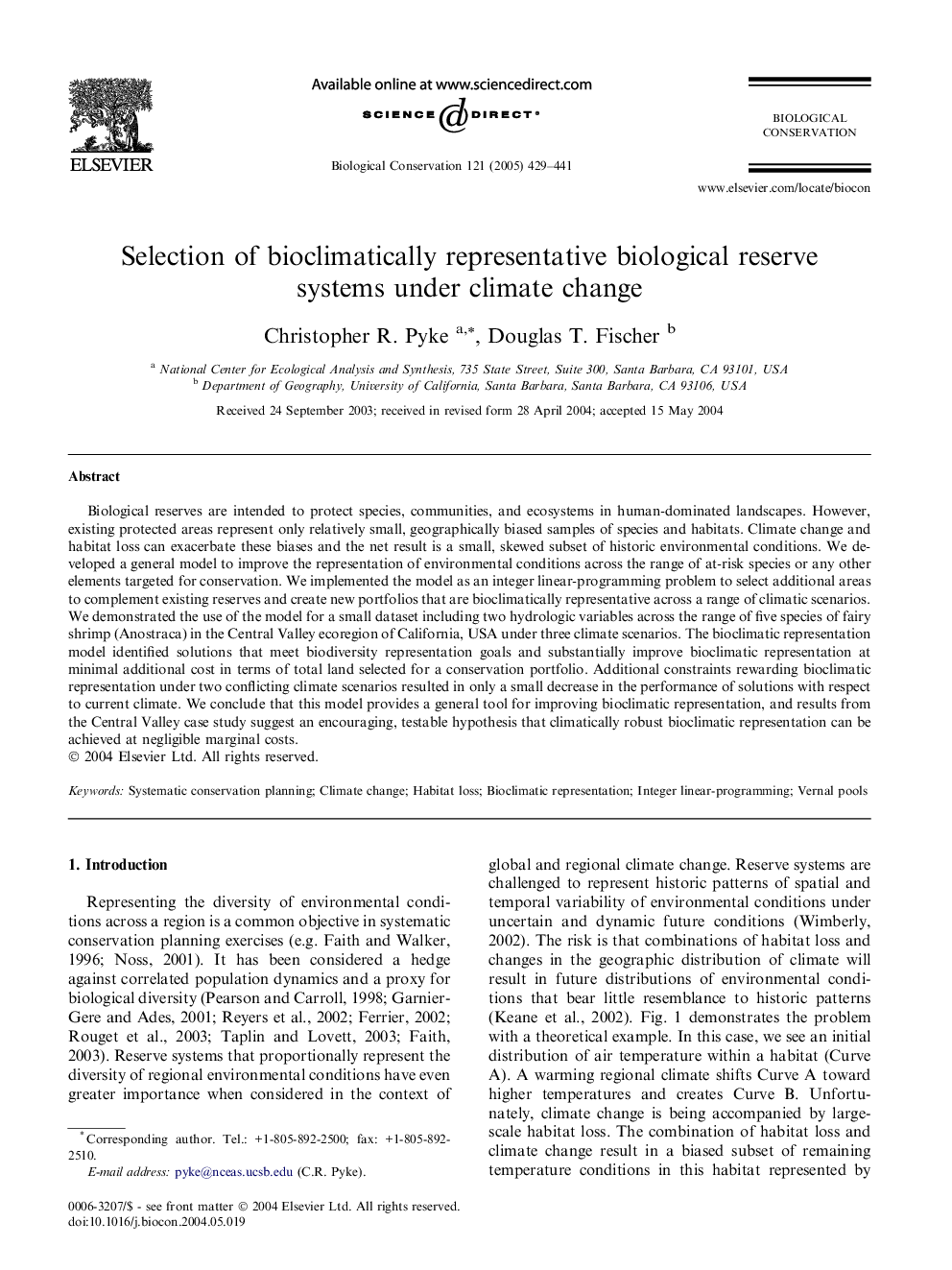| Article ID | Journal | Published Year | Pages | File Type |
|---|---|---|---|---|
| 9446080 | Biological Conservation | 2005 | 13 Pages |
Abstract
Biological reserves are intended to protect species, communities, and ecosystems in human-dominated landscapes. However, existing protected areas represent only relatively small, geographically biased samples of species and habitats. Climate change and habitat loss can exacerbate these biases and the net result is a small, skewed subset of historic environmental conditions. We developed a general model to improve the representation of environmental conditions across the range of at-risk species or any other elements targeted for conservation. We implemented the model as an integer linear-programming problem to select additional areas to complement existing reserves and create new portfolios that are bioclimatically representative across a range of climatic scenarios. We demonstrated the use of the model for a small dataset including two hydrologic variables across the range of five species of fairy shrimp (Anostraca) in the Central Valley ecoregion of California, USA under three climate scenarios. The bioclimatic representation model identified solutions that meet biodiversity representation goals and substantially improve bioclimatic representation at minimal additional cost in terms of total land selected for a conservation portfolio. Additional constraints rewarding bioclimatic representation under two conflicting climate scenarios resulted in only a small decrease in the performance of solutions with respect to current climate. We conclude that this model provides a general tool for improving bioclimatic representation, and results from the Central Valley case study suggest an encouraging, testable hypothesis that climatically robust bioclimatic representation can be achieved at negligible marginal costs.
Related Topics
Life Sciences
Agricultural and Biological Sciences
Ecology, Evolution, Behavior and Systematics
Authors
Christopher R. Pyke, Douglas T. Fischer,
